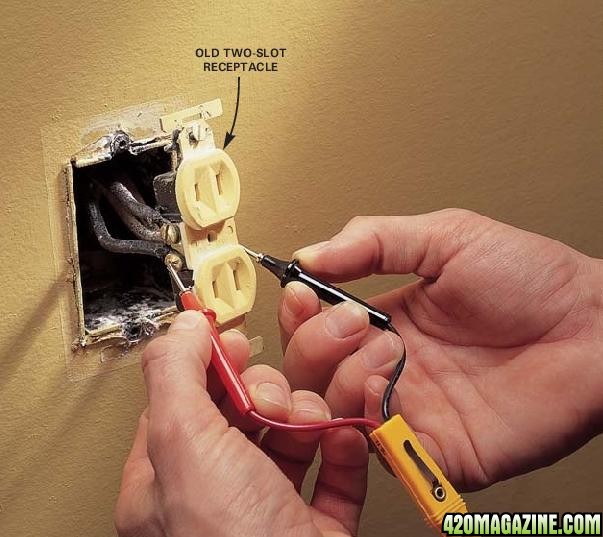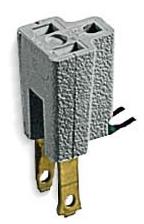Hello, I'm new here but this looks like I've found heaven! 
Anyways on to the question...
I'm planning a small grow with a 400w HPS light. However, the place I'm going to be doing the grow at is a very old house. So, it only has 2 prong power outlets on the walls, here's a pic of what I'm talking about:

I have access to some 2 prong to 3 prong converter things as seen here:

However, I don't know if it's safe to run my light through one of the power outlets using a 3 prong converter....
Here's what I was planning: To install a 2 to 3 prong converter on the wall outlet, then plugging a power strip into that which would have the light and a few other things plugged into it.
Would this be a safe thing to do??????
My only alternative would be to run an extension cord from the next room which has a 3 prong power outlet installed for the air conditioner.
THANKS IN ADVANCE !!!!!

Anyways on to the question...
I'm planning a small grow with a 400w HPS light. However, the place I'm going to be doing the grow at is a very old house. So, it only has 2 prong power outlets on the walls, here's a pic of what I'm talking about:

I have access to some 2 prong to 3 prong converter things as seen here:

However, I don't know if it's safe to run my light through one of the power outlets using a 3 prong converter....
Here's what I was planning: To install a 2 to 3 prong converter on the wall outlet, then plugging a power strip into that which would have the light and a few other things plugged into it.
Would this be a safe thing to do??????
My only alternative would be to run an extension cord from the next room which has a 3 prong power outlet installed for the air conditioner.
THANKS IN ADVANCE !!!!!


